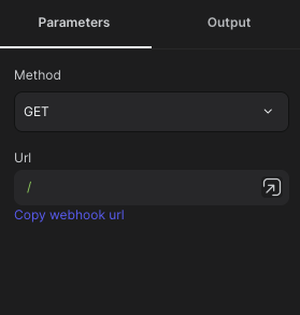Learn about backend flows in Peaka and how you can create APIs for your projects
This article provides an overview of backend flows in Peaka, explaining their role and how you can create APIs for your projects.
Backend flows in Peaka serve as a means to create APIs that allow you to access and interact with data and perform actions from external projects or applications.
For example, if you have a Peaka table and need to filter it or execute various actions using flow nodes, you can generate an API through a backend flow. This API enables you to use the processed data in your other projects seamlessly.
To create a backend flow and generate an API, follow these steps:
If you're unfamiliar with creating a backend flow, refer to our comprehensive guide on How to Create a Flow for detailed instructions.
Once you have created your backend flow, add the necessary nodes to define the desired actions and data processing steps.
Configure the trigger that will initiate the execution of your backend flow.

Congratulations! You can now use the copied URL to access the API created by your backend flow.
Backend flows empower you to extend the functionality of your projects by providing seamless access to processed data and actions, making them a valuable tool for integration and automation.